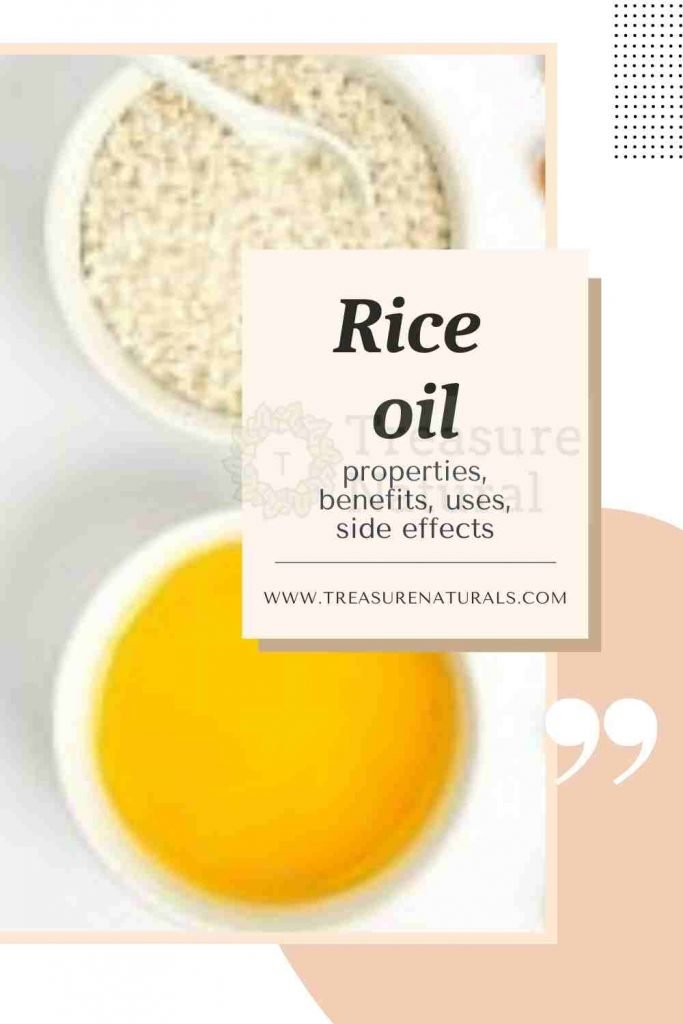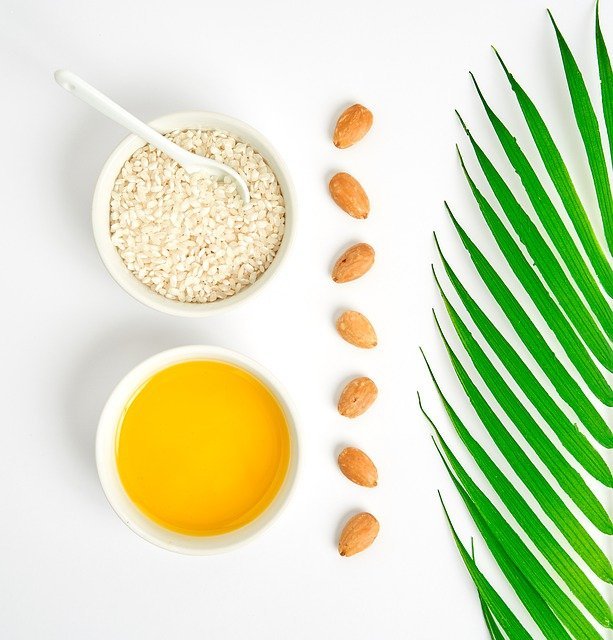
Rice oil, extracted from the seed of the rice plant, is used in cosmetics, in nutrition and as a natural remedy for high cholesterol, to increase the level of endorphins and testosterone, and to help in the preparation phase of menopause. Let’s find out better.
Characteristics of rice oil
Rice oil(Orzya sativa) is extracted from the germ and chaff of rice, a grass of Asian origin (Indian subcontinent) whose use is widespread throughout the world.
The extraction of the oily part from the rice seed takes place precisely from the germ of the rice which is the part where the sprout of the future seedling is born and from the chaff that is the internal film that covers the seed from within.
Both of these parts make up 14% of the seed and are eliminated during the preparation of the food grain known as “white rice“, that is, the one that has undergone the operations of the deburring and blasting process.
In the case of brown rice, the grain is still naturally raw and therefore we find its integrity of substances. The presence of wheat germ brings vitality to the food but it is also the part that first leads to deterioration of the product.
Reading the label allows you to evaluate the quality of the oil, its components, the method used for extraction whether with or without chemical solvents and from which agriculture the grain of rice was grown: it is up to us to choose to buy according to price and information.
Returning to rice oil we can say that the taste is pleasant and light, with a delicate taste of nuts that makes it indicated mainly for seasoning raw dishes.
Thanks to a very high smoke point (232 °) and its rather soft flavor it is suitable for fried foods that are light and fragrant typical of the countries of origin of rice that since ancient tradition use it with both cooked and raw ingredients.
Properties and use of rice oil
About half of the fats that make up the oil are monounsaturated, one-third polyunsaturated and one-fifth saturated. The main fatty acids that make up the oil are: 42.5% oleic acid, 39.1% linoleic acid (omega-6), 15% palmitic acid, 2.9% stearic acid, 2.2% a-linoleic acid (omega-6).
This composition makes it a good seasoning oil that when supplemented at the food level with oils richer in omega-3, such as linseed oil or hemp oil, create a good combination for the richness of essential fatty acids important for the diet.
curative and wellness use is essentially donated by two components: Vitamin E (Tocopherol) and alpha-oryzanol.
We thus obtain analgesic properties ,thanks to the ability to increase the level of endorphins; it also even increases testosterone, helping in the preparation phase of menopause.
According to some studies it seems to be even able to lower bad cholesterol (LDL), reduce fats in the blood thanks to the presence of phytosterols and protect the intestinal mucosa by stabilizing the secretion of gastric juices.
If we think of the Eastern countries where the consumption of this oil is traditional, we can immediately see the correlation between a low incidence of cardiovascular diseases and its consumption as a health oil.
Finally, as a source of vitamin E, it is a strong antioxidant that fights free radicals by counteracting aging.
More generally, among the properties of rice oil stand out in addition to the already mentioned antioxidant, those anti-inflammatory, emollient, moisturizing, cholesterol-lowering, preventive cardiovascular disorders and skin aging, protective from UV rays.
In cosmetics it is one of the most used ingredients for skin and hair beauty products , it has a fairly low cost and is highly appreciated for its moisturizing, emollient and smoothing power.
It has the ability to nourish in depth without altering the natural pH of the tissues themselves.
Useful even against stretch marks thanks to its elasticizing power and after waxing it is an excellent oil to soothe and moisturize irritated or reddened skin. Among the cosmetic products we also find sunscreens in which it provides its precious active ingredient, oryzanol that protects and shields from ultraviolet radiation. Other particular uses from rice oil are the production of a rice oil wax, used both in cosmetics, and in the production of candles, shoe waxes and various cleaning products.
Did you know that
In India it is used to make vegetable ghee, a variant of clarified butter used for long centuries in the Vedic rituals prescribed by Hindu sacred texts and is, together with milk and honey, one of the sacred foods of Indian rituality, so much so that in the Vedas you can even find a sacred song dedicated to him.
In the English language it is more correctly called Rice bran oil, or “rice bran oil”, since it is extracted from the chaff.
A beauty recipe

Rice oil is a product to keep in the bathroom cabinet as an emergency remedy for reddened and irritated skin or as a protective for UV rays.
It can also be used every morning to nourish the skin, moisturize it and make it soft. The use is very simple since it is enough to apply the oil on the skin and massage lightly to make it absorb.
Indicated in the driest areas such as elbows and knees and for the whole body including more delicate areas. If we want to add in 50 ml of rice oil 2 drops of essential oil to the fragrance we prefer we can have, in addition to an enviable skin, also a fragrance to make everyone’s head spin!






